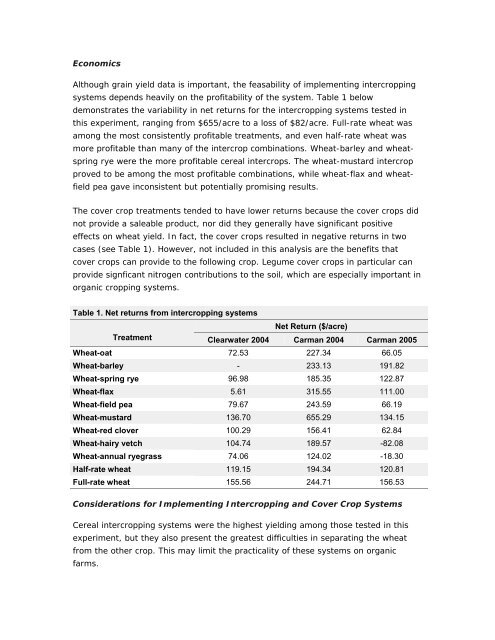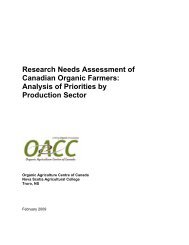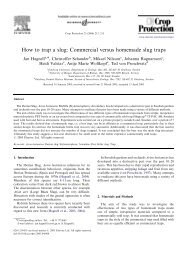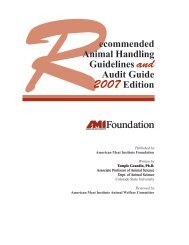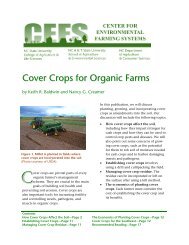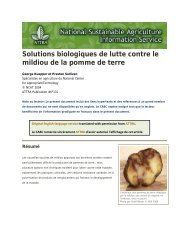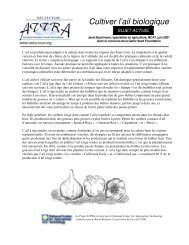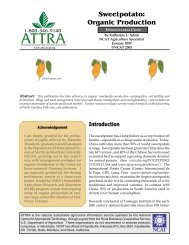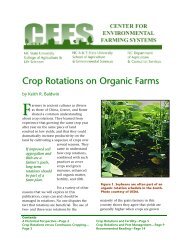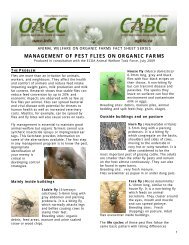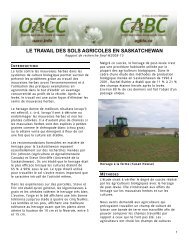Cultivar Mixtures, Cover Crops, and Intercropping with Organic ...
Cultivar Mixtures, Cover Crops, and Intercropping with Organic ...
Cultivar Mixtures, Cover Crops, and Intercropping with Organic ...
Create successful ePaper yourself
Turn your PDF publications into a flip-book with our unique Google optimized e-Paper software.
EconomicsAlthough grain yield data is important, the feasability of implementing intercroppingsystems depends heavily on the profitability of the system. Table 1 belowdemonstrates the variability in net returns for the intercropping systems tested inthis experiment, ranging from $655/acre to a loss of $82/acre. Full-rate wheat wasamong the most consistently profitable treatments, <strong>and</strong> even half-rate wheat wasmore profitable than many of the intercrop combinations. Wheat-barley <strong>and</strong> wheatspringrye were the more profitable cereal intercrops. The wheat-mustard intercropproved to be among the most profitable combinations, while wheat-flax <strong>and</strong> wheatfieldpea gave inconsistent but potentially promising results.The cover crop treatments tended to have lower returns because the cover crops didnot provide a saleable product, nor did they generally have significant positiveeffects on wheat yield. In fact, the cover crops resulted in negative returns in twocases (see Table 1). However, not included in this analysis are the benefits thatcover crops can provide to the following crop. Legume cover crops in particular canprovide signficant nitrogen contributions to the soil, which are especially important inorganic cropping systems.Table 1. Net returns from intercropping systemsNet Return ($/acre)Treatment Clearwater 2004 Carman 2004 Carman 2005Wheat-oat 72.53 227.34 66.05Wheat-barley - 233.13 191.82Wheat-spring rye 96.98 185.35 122.87Wheat-flax 5.61 315.55 111.00Wheat-field pea 79.67 243.59 66.19Wheat-mustard 136.70 655.29 134.15Wheat-red clover 100.29 156.41 62.84Wheat-hairy vetch 104.74 189.57 -82.08Wheat-annual ryegrass 74.06 124.02 -18.30Half-rate wheat 119.15 194.34 120.81Full-rate wheat 155.56 244.71 156.53Considerations for Implementing <strong>Intercropping</strong> <strong>and</strong> <strong>Cover</strong> Crop SystemsCereal intercropping systems were the highest yielding among those tested in thisexperiment, but they also present the greatest difficulties in separating the wheatfrom the other crop. This may limit the practicality of these systems on organicfarms.


